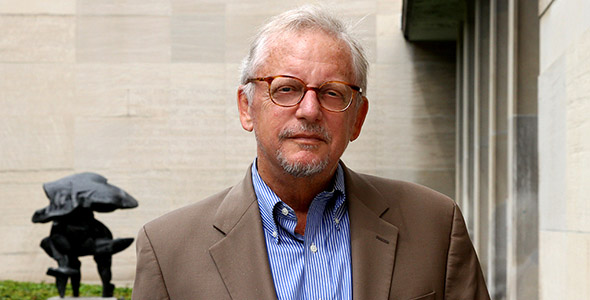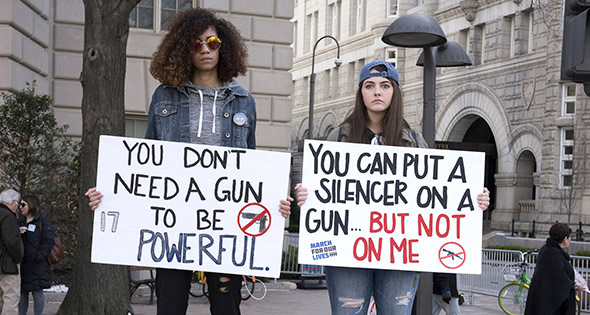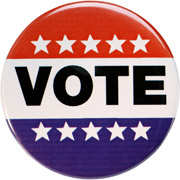ELECTION INSIGHTS 2018
Research-based perspectives from MIT
John Tirman | On Reducing Gun Violence
Executive Director and Principal Research Scientist, Center for International Studies

"A social movement to challenge America's reslient gun culture has rocked politics for the first time in a generation, and might shake up congressional complacency in the midterm elections."
ELECTION INSIGHTS 2018
Research-based perspectives from MIT
QUESTION
Mass shootings have become a regular feature of American life over the past few years. Based on your research into American attitudes toward guns, to what extent do you expect the question of gun violence to impact the midterm elections? In your ideal scenario, what would the U.S. position and cultural ethos on gun violence look like? What policies would you recommend to move the country toward that ideal?
COMMENTARY
America’s gun culture is a resilient fact of political life. Attempts to reverse the country’s appetite for firearms have largely failed, even as gun violence persists at an astonishing pace. Lately, however, a social movement to challenge gun culture has rocked politics for the first time in a generation, and this might shake up congressional complacency in the midterm elections.
The bare facts are that Americans possess nearly 300 million firearms, and guns are present in more than 40 percent of U.S. households. About 35,000 people die by gunshot each year, more than half by suicide, and the overall numbers are gradually climbing. There have been more than 1,800 mass shootings, defined as incidents in which four or more people are shot, since the horrifying Sandy Hook massacre of schoolchildren in 2012.
This is an international problem, too, as several countries with high homicide rates get guns from the United States, and gun advocates such as the National Rifle Association (NRA) lobby for looser gun laws in many nations. The culture of the gun is exported with the firearms.
That gun culture — the history, lore, social practices, networks, and politics of firearms — is a stubborn artifact of the American experience. We have long extolled the pioneer, the frontiersman, and the cowboy, those paladins of settler expansion across the continent. The gun was central to that frontier myth and remains strongly linked to the nation’s core value of freedom. Today this archetype is valorized on television in the form of a cop or a soldier. It is no coincidence that gun homicides are markedly higher in other settler nations in the Americas than anywhere else in the world. Brazil and El Salvador, for example, even outpace the United States in per capita deaths by gunshot.
Proven methods
But the carnage and the culture are being tested as never before. The Parkland, Florida, high school massacre on Valentine’s Day, in which 17 students and staff were murdered, sparked a survivors’ campaign, March for Our Lives, that drew an enormous amount of attention. In Florida alone (a state and a governor long scornful of gun laws), a gun-control bill has been enacted that sets a three-day waiting period for purchases, changes the lawful age of possession from 18 to 21, and sets up a “red flag” mechanism for confiscating guns from those considered a threat to themselves or others. Other states have passed similar measures — all proven methods for reducing gun fatalities.

Photo: Mobilus in Mobili Flickr March for Our Lives, 24 March 2018
In DC and other cities, hundreds of thousands of students and others marched for common sense gun control in the wake of deadly school shootings in the U.S.
March for Our Lives was effective because the survivor students turned grief into activism — their authenticity was their principal asset. Another organization that uses its members adeptly and is shaking up several congressional races is Moms Demand Action for Gun Sense in America, founded by a suburban Indiana mother, Shannon Watts, the day after the Sandy Hook massacre. Launched with a Facebook post and modeled after Mothers Against Drunk Driving, Moms Demand Action (which merged with the Michael Bloomberg–financed Everytown for Gun Safety in 2013) now has 4 million supporters and chapters in every state. The organization gets pledges from congressional candidates and provides endorsements.
The list of achievements by groups like Moms Demand Action is often preventative — blocking state legislation to loosen gun laws — and convincing businesses to stop selling semi-automatic weapons like those used in many mass shootings.
Shifting attitudes
Their success is also visible in public attitudes, which are shifting toward preventing gun violence. In Gallup polling, for example, in 2010 about the same numbers of Americans said gun laws should be more strict or should stay the same. Today, 67 percent say they should be stricter, with just 28 percent saying they should stay the same. By even larger margins, the public supports stricter background checks, red flag laws, and raising the age for the legal possession of firearms.
The old gun culture remains potent, as evidenced by the many legislative battles fought over ending restrictions on gun ownership and possession. The entertainment industry appears wholly committed to putting gun violence front and center in its programming. (A family physicians’ journal notes “an average American youth will witness 200,000 violent acts on television before age 18.”) And politicians pay homage to gun culture, bank NRA lobbying money ($5 million in 2017), and aver that they are powerless to stop the violence.
Redefining liberty
Preventing gun violence will entail disrupting gun culture — redefining liberty to include freedom from violence, insisting that citizen safety is implicit in the Second Amendment, and scripting gun-free versions of Hollywood heroism. A tall order, but in April, one opinion poll asked, "Would you definitely vote for or definitely vote against a candidate for Congress who wants stricter gun control laws?" Sixty percent said “yes” to a stricter-law candidate. A cultural transformation? It just may be happening.
Suggested Links
About
John Tirman | Website | Bio
MIT Center for International Studies
MIT Department of Political Science
Books
Richard Slotkin, Gunfighter Nation: The Myth of the Frontier in Twentieth-century America (University of Oklahoma Press, 1981)
Philip J Cook and Jens Ludwig, Gun Violence: The Real Costs (Oxford University Press, 2000)
Daniel W. Webster and Jon S. Vernick, eds., Reducing Gun Violence in America: Informing Policy with Evidence and Analysis (Johns Hopkins University Press, 2013)
Scott Melzer, Gun Crusaders: The NRA's Culture War (New York University Press, 2012)
Articles and Websites
Brad J. Bushman, Patrick E. Jamieson, Ilana Weitz, Daniel Romer,
“Gun Violence Trends in Movies,” Pediatrics (November 2013)
Graphs, maps of mass shootings from Vox
Statistics on gun ownership, U.S., from Statista
Opinion surveys of the American public on gun issues
Institute for Health Metrics and Evaluations, global deaths from firearms
How to Vote in Every State.
See video with info for your state — and vote!
